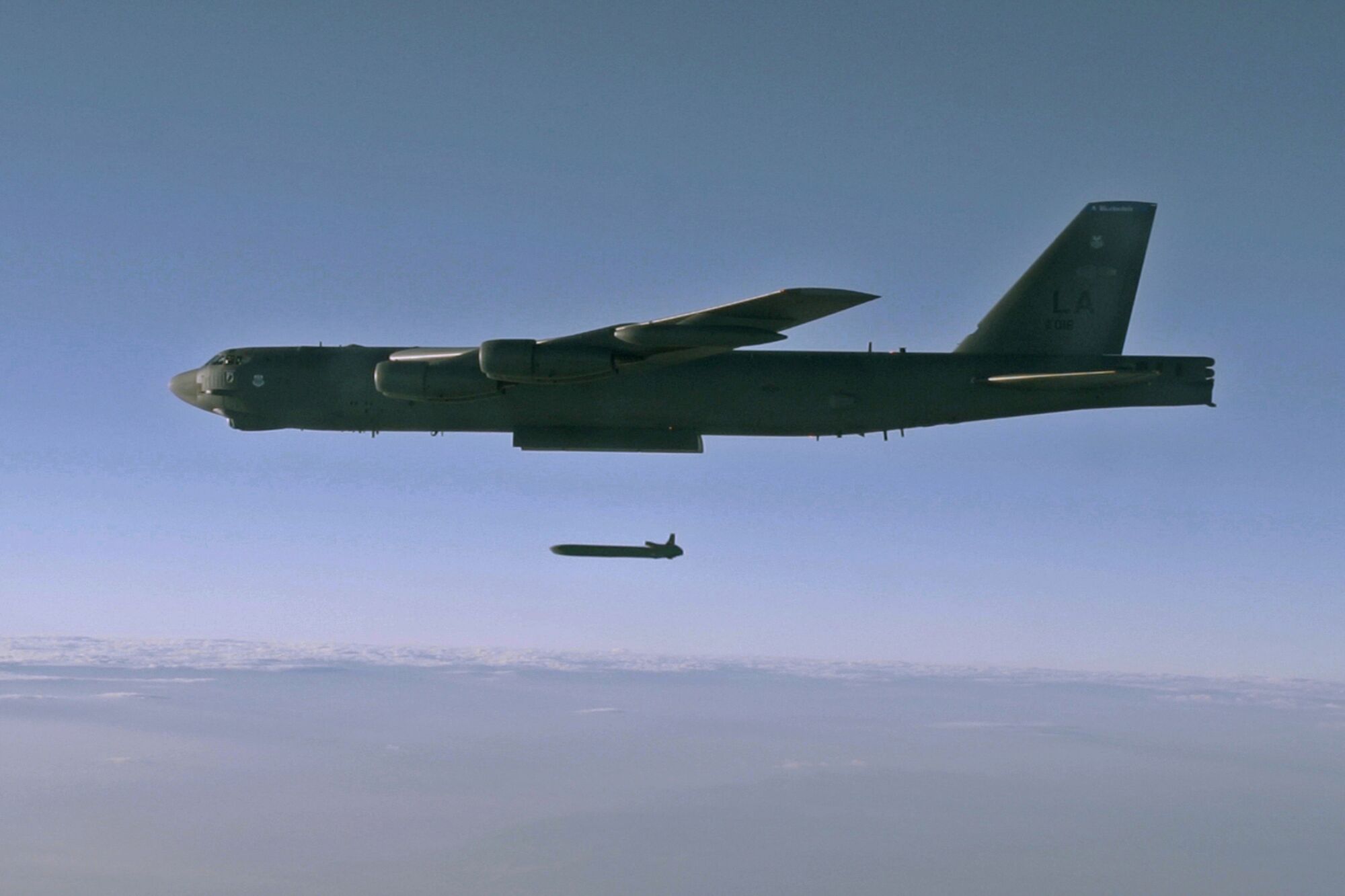Air Force Nuclear Cruise Missiles Seen Costing About $29 Billion
By- Estimate is about $2 billion more than Air Force figures
- Service expects to purchase 1,020 of the air-launched missiles
The U.S. Air Force’s new nuclear cruise missile will cost at least $29 billion to develop, procure, operate and sustain, a Pentagon evaluation found.
That’s $2 billion more than the service’s estimate, with the major difference stemming from the development and procurement phases for as many as 1,020 of the air-launched missiles, known as the Long-Range Standoff Weapon. The Pentagon’s Cost Assessment and Program Evaluation office estimated $16.2 billion for those parts of the program, compared with $14.2 billion projected by the Air Force, according to figures obtained by Bloomberg News.
“Because there is a limited actual cost data” for the new missile, the Air Force and the Pentagon office “used different estimating methodologies, resulting in a significant difference in procurement costs,” according to a Defense Department letter to be sent to congressional defense committees this week outlining the discrepancy.
On July 1, Raytheon Technologies Corp. was awarded a contract valued at as much as $2 billion to develop the missile as part of the program’s estimated $6.4 billion in development costs; procurement is estimated at almost $10 billion. The Air Force had declined to release the cruise missile’s development and procurement cost estimates when the contract was released.
Raytheon Awarded $2 Billion Contract for Nuclear Cruise Missile
The previously classified figures for the missile don’t include an additional estimated $12 billion for the weapon’s W-80-1 warhead, developed separately by the Energy Department.
The Air Force plans to buy the new missile to replace the Air Launched Cruise Missile first fielded in 1982. The new weapon, if deployed, would be carried on B-52 and B-21 bombers. Pentagon data indicates the cruise missile is planned to be declared operational between July and September 2030.
At a broader level, the new data helps flesh out the potential costs in modernizing the nation’s Cold War-era capacity to deliver nuclear weapons by air, land and sea. That nuclear triad remains a key Pentagon priority under the Biden administration after it was jumpstarted by President Barack Obama and continued by President Donald Trump.
Nuclear Triad
In its latest review of long-term nuclear triad costs, the Congressional Budget Office estimated in May -- before the new missile’s cost figures were released -- that if carried out, the Pentagon and Energy Department’s nuclear forces plans would cost a total of $634 billion through 2030.
The next-generation cornerstones of the U.S. nuclear triad are the Navy’s Columbia-class submarine; the Air Force’s intercontinental ballistic missile, known as the Ground-Based Strategic Deterrent; and Air Force B-2 and B-52s carrying gravity bombs and cruise missiles. The Pentagon is also developing an F-35 jet version capable of dropping nuclear bombs. The systems would be networked through an upgraded nuclear command and control infrastructure.
An Air Force spokesman said Defense Department officials have directed the service to use the Pentagon office’s estimate in long-range budget planning.
Incorporating the higher number will add to budget pressures for the service, which is also developing the new ICBM. That system could cost U.S. taxpayers as much as $110.6 billion in acquisition expenditures, which include development and procurement; the cost jumps to $264 billion when long-terms operations and support costs are included.


Keine Kommentare:
Kommentar veröffentlichen